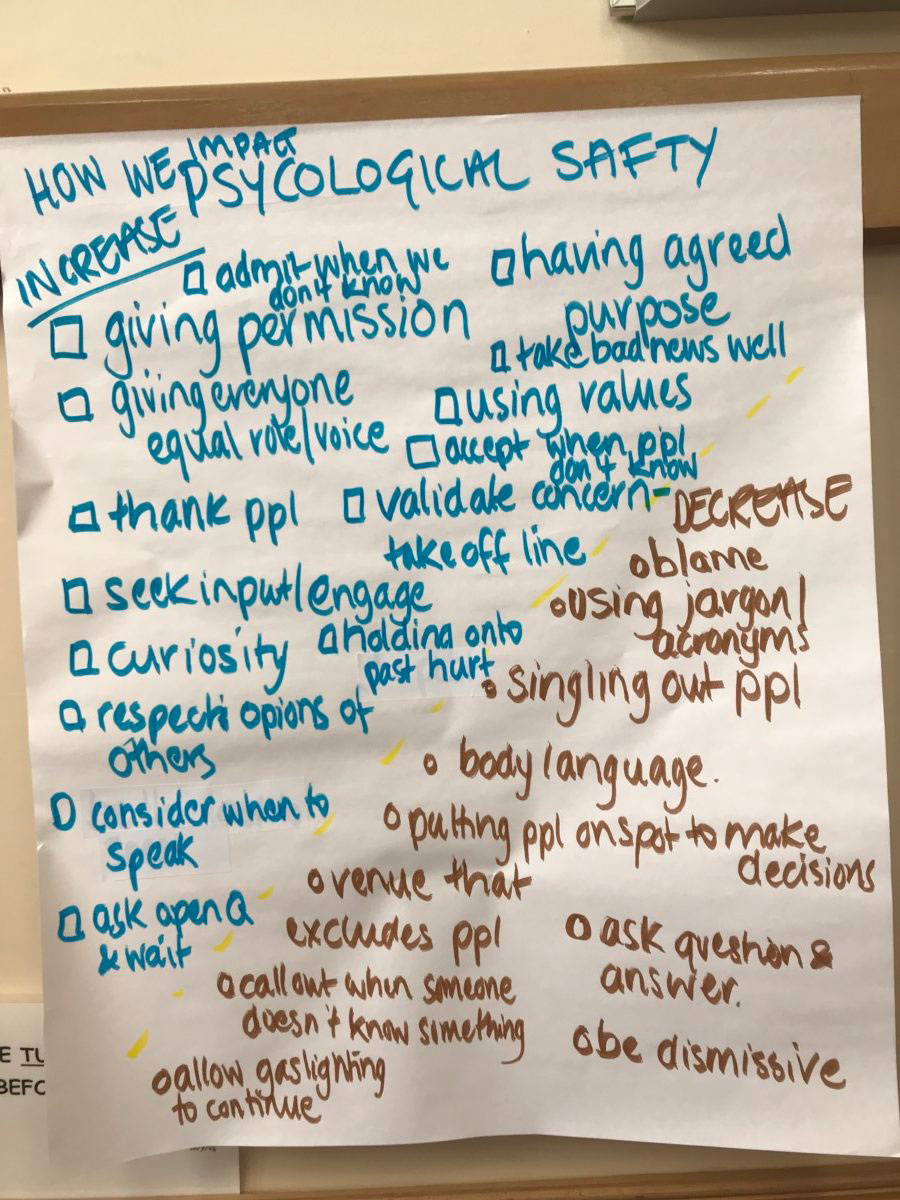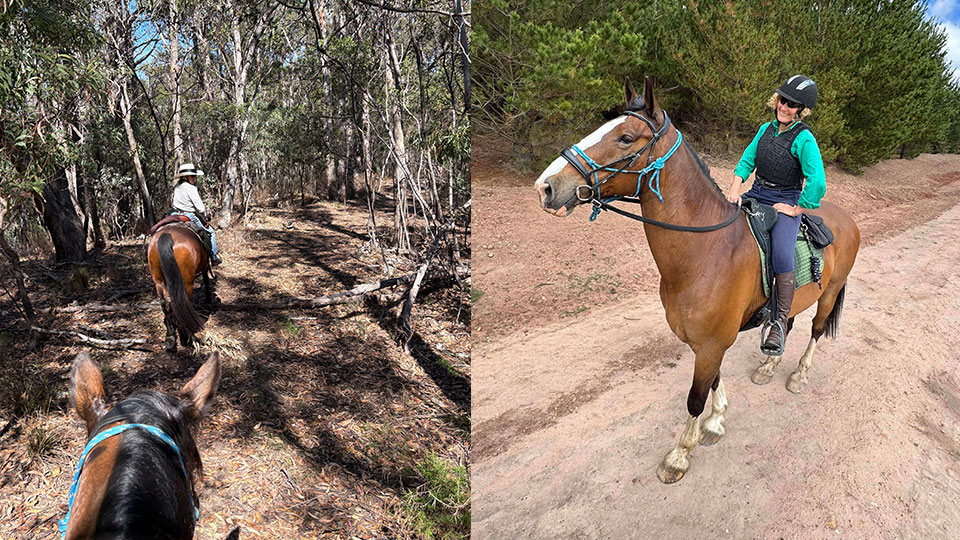Psychological safety is so important in teams, and especially in leadership teams because the top team sets the standard for the whole organisation.
Amy C. Edmondson, in her book ‘The Fearless Organization: Creating Psychological Safety in the Workplace for Learning, Innovation, and Growth’ defines psychological
safety as ‘the belief that the work environment is safe for interpersonal risk taking’.
Edmonson argues that ‘for knowledge work to flourish, the workplace must be one where people feel able to share knowledge’. Sounds obvious right? When we feel safe, we can trust one another and be candid. When we feel safe we bring our best selves to the work and the relationship.
If it’s so obvious, why is it so hard? Do we deliberately make the workplace unsafe?
The flip chart image below summarizes what one executive team I am working with believe increases and decreases psychological safety for them. Some of the things that increase a sense of safety require conscious thought… And many that decrease psychological safety not done deliberately.

Sadly, the impact of inadvertent behaviours that reduce psychological safety is far greater than people realise.
What impacts psychological safety in your team? What could you do today to create an environment where your people believe it’s safe to take interpersonal risk?
Go Fearlessly.
STAY IN THE LOOP





